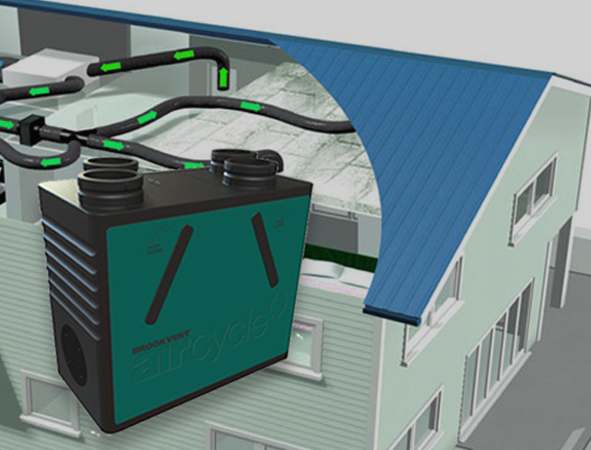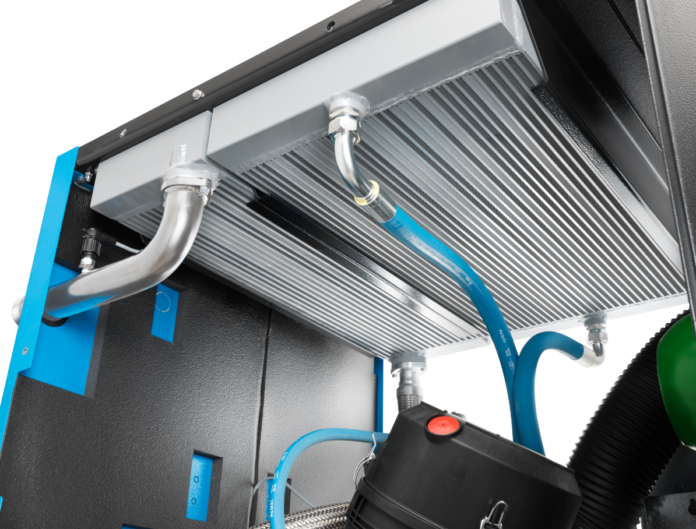Almost every day, there are new inventions that can help us to make our lives easier. One such invention is the HVAC ventilation system. It is a device that allows us to heat or cool the room. Many types of HVAC ventilation systems are available in the market today, but this article will focus on two major types: HRV system and HVAC heating systems. HRV is a ventilation system that helps keep the room air clean and healthy. It differs from an HVAC ventilation system because it does not rely on outside air.
HRV system is a mechanical ventilation system with heat recovery
HRV system provides fresh air to buildings while recovering a significant amount of heat energy from the stale air. HRVs are used in large buildings and other structures where it is essential to maintain temperature control throughout the space.
The main components of an HRV ventilation system include the following:
- An intake plenum (or box) near the ceiling of a room, usually under an operable window or door
- An exhaust plenum (or box) farther away from this intake point that leads outside
- A set of supply and exhaust fans located within each plenum, as well as dampers that direct airflow through one or both sides of each duct system.
HRV heating system uses heat transfer, but the HVAC heating system uses a combustion process
In an HRV ventilation system, heat transfer occurs through a heat exchanger. A fan draws the air from the room and passes over a cold finned coil. The heated gases from the flue flow through this coil and back into your home. It means that you need to have enough power to supply both fans for air circulation and for heating your house.
The HVAC ventilation uses combustion, which means it burns fossil fuels such as natural gas or propane to generate heat for warming up your house, but it will also release carbon dioxide, which is harmful to people’s health! In addition, it produces ash which contains toxic substances like lead that can be harmful if inhaled by humans or animals. Hence, they need regular maintenance by qualified technicians who know how they work (this can get quite expensive).
HRV (Heat Recovery Ventilation) systems provide a balanced, energy-efficient supply
- HRV provides a balanced, energy-efficient supply of fresh air to the building.
- HRV heating systems recover heat from the exhaust air and use it to warm incoming fresh air. It reduces the need for additional heating and improves space comfort.
- HRV also improve indoor air quality by removing stale, polluted air from your home or office before exhausting it outdoors. This process also prevents pollutants from entering your home or office through an open window during colder weather (winter), when outdoor air is coldest and most likely not suitable for breathing by people who are sensitive to these types of contaminants (older adults living alone).
HRV has a higher efficiency of up to 80%, whereas the HVAC’s efficiency is around 60%
As you know, the HRV uses a heat exchanger to transfer heat from outside to inside. It also passes on moisture and pollutants from inside to outside. As a result, it has a higher efficiency than an HVAC ventilation system, up to 80%. At the same time, the HVAC’s efficiency is around 60%.
It makes HRV more effective than HVAC because of the following reasons:
- It uses thermal energy instead of a combustion process (like in the case of furnaces or boilers), which results in fewer emissions and less pollution. It also means the system will not release harmful gases released into your home environment with an HRV ventilation system installed.
HVAC systems are usually installed in houses, whereas HRV is installed only in more significant buildings

The HRV is used in large buildings with many rooms and people occupying them. On the other hand, the HVAC system is used in smaller structures such as houses and apartments.
In addition to this, HRV are more expensive than HVAC ventilation systems. One of their significant advantages is that they are more energy efficient than HVAC because they exhaust stale air outside and bring in fresh air from outside. In addition to this, they can reduce CO2 levels by up to 80%.
Very few people know about HRV air exchange systems and should be informed about them.
HRV ventilation systems are an energy-efficient, cost-effective and eco-friendly alternative to HVAC ventilation systems. HRVs allow for the continuous exchange of stale indoor air with fresh outdoor air without using a fan or compressor. The unit will automatically monitor the room temperature, humidity levels and air quality so that you can control it accordingly. It is easy to install and requires minimal maintenance but needs regular cleaning at least twice a year to keep it running smoothly in your home or office space.
HRVs are ideal for homes, offices and other commercial spaces. The unit has a manual lever that can be easily moved to the left or right side to ventilate hot or cold air.
The core is usually situated in one central location near your furnace for efficient installation.
One of the advantages of HRV-systems is that they can be installed in a central location, such as a closet or utility room. The core is usually situated in one central location near your furnace for efficient installation. This type of system often requires fewer ducts and air handling components than other HVAC system because there are fewer zones to heat and cool throughout your home or office building.
Another advantage is that they are more energy-efficient than other HVAC ventilation systems. They use less heat or air conditioning by circulating it throughout your home or office. Instead, the system only warms or cools the rooms you need at any given time.
Heat recovery ventilation (HRV) systems will work with any heating or cooling system.
HRV-systems are often used in homes that have a forced air furnace.
If you have a forced air furnace, HRV can be installed in your home to help improve indoor air quality and lower energy bills. The HRV pulls stale, polluted air into the unit, where it is heated or cooled before being sent back into the house. This system will work with any heating or cooling system, including furnaces, heat pumps, air conditioners and natural gas (LPG), oil or propane furnaces.
HRV are available in two-stage and three-stage models. The two-stage is the most common, but the three-stage systems are more efficient. Consider getting a three-stage system installed if you have a large home with several rooms and high ceilings.
An HRV will exchange stale air for fresh air continually throughout the year.
HRV ventilation are more efficient than HVAC as they continually exchange stale air for fresh air throughout the year. HRVs have a higher efficiency of up to 80%, while conventional HVAC ventilation systems can only reach 40-50%. That is because HRVs use heat recovery technology, which transfers heat from one area to another. Conventional ducted heating and cooling systems do not use this technology, so they require incredible energy to maintain indoor temperatures within a set range.
HVAC ventilation systems also do not offer any benefits if your home has poor insulation or leaky windows—but HRVs do!
Conclusion
While the HRV and HVAC ventilation systems exchange air, they do so differently. An HRV ventilation system uses the heat transfer and is most effective with a heating or cooling system. On the other hand, the HVAC (heating, ventilation and air conditioning) system uses combustion processes to produce fresh air circulated throughout your home or office building through ducts. It means that an HRV will work well in any building, while you must install an HVAC ventilation system in large buildings as it needs a lot more space around it too!
Related Websites:
Articles on Blogshunt
Articles on tbablogs
Articles on Blogspeoples
Articles on Thebigblogtheory
Articles on Allcityforums

